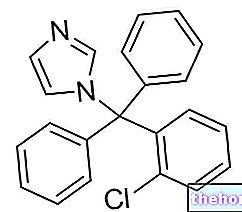
What is Optaflu?
Optaflu is a vaccine available as a suspension for injection in pre-filled syringes. The vaccine contains, as active ingredients, the inactivated surface antigen of three different strains (types) of influenza virus (ie A / Salomon Islands / 3/2006, A / Wisconsin / 67/2005 and B / Malaysia / 2605/2004 ).
What is Optaflu used for?
Optaflu is used for vaccination against influenza in adults, particularly those with an increased risk of developing complications of the disease. The vaccine should be used according to official recommendations.
The vaccine can only be obtained with a prescription.
How is Optaflu used?
Optaflu is given as a single 0.5 ml injection into the muscle covering the shoulder joint.
How does Optaflu work?
Optaflu is a vaccine. Vaccines work by "teaching" the immune system (the body's natural defense system) to defend itself against a disease. Optaflu contains surface fragments of three different strains of the flu virus. When a person is vaccinated, the immune system recognizes the fragments. of the virus as "foreign" and produces antibodies against that virus. If exposed to any of these strains of viruses in the future, the immune system will be able to produce antibodies more quickly. The antibodies will help the body protect itself from diseases caused by these strains of influenza viruses.
Each year, the World Health Organization (WHO) provides recommendations on influenza strains to be included in vaccines for the upcoming flu season, and these viral strains must be inserted into Optaflu before the vaccine can be used. Optaflu currently contains fragments of the flu. viral strains that are expected to cause influenza in the 2007/2008 season, in accordance with the recommendations of the WHO for the Northern Hemisphere and the European Union (EU). The viral strains contained in Optaflu will need to be replaced again, before the vaccine can be used in subsequent seasons.
The viruses used in Optaflu are grown in mammalian cells, unlike those contained in other flu vaccines, which are grown in chicken eggs.
How has Optaflu been studied?
The effects of Optaflu were first tested in experimental models before being studied in humans.
The efficacy of Optaflu was initially assessed using a vaccine composition that included the viral strains that were expected to cause influenza in the 2004/2005 season. The efficacy of the vaccine was evaluated in one main study involving 2 654 adult patients, approximately half of whom were elderly (people over 60 years of age). The effects of Optaflu were compared with those of a vaccine. similar flu shot produced in eggs. The study compared the ability of the two vaccines to trigger the production of antibodies (immunogenicity) by comparing the levels of antibodies before injection and after three weeks. The immunogenicity of the current vaccine formulation was confirmed in 135 adults, about half of them elderly.
What benefit has Optaflu shown during the studies?
In the main initial study, both Optaflu and the comparator vaccine had adequate antibody levels for protection against all three influenza strains, as set out in the criteria defined by the Committee for Medicinal Products for Human Use (CHMP) for influenza vaccines. produced from cell cultures. The two vaccines have shown similar results in stimulating antibody production in adult patients aged both less and over 60 years.
The current composition of Optaflu, for the 2007/2008 season, recorded antibody responses against the three influenza strains included in the vaccine similar to those observed in the main study.
What is the risk associated with Optaflu?
The most common side effects seen with Optaflu (seen in more than 1 in 10 patients) are headache, erythema (redness of the skin), pain, malaise and fatigue. These reactions usually disappear within one to two days without treatment. For the full list of side effects reported with Optaflu, see the package leaflet.
Optaflu must not be used in people who may be hypersensitive (allergic) to the active substances or to any of the other substances. People with a fever or an acute (short-lived) infection cannot receive the vaccine until they are fully cured.
Why has Optaflu been approved?
The Committee for Medicinal Products for Human Use (CHMP) decided that Optaflu's benefits are greater than its risks in the prophylaxis of influenza in adults, particularly in those with an increased risk of developing associated complications. The Committee therefore recommended the release of the marketing authorization for Optaflu.
More information about Optaflu
On June 1, 2007, the European Commission granted Novartis Vaccines and Diagnostics GmbH & Co. KG an EU-wide "Marketing Authorization" for Optaflu.
For the complete version of the Optaflu EPAR click here.
This summary was last updated: 1-2008.
The information on Optaflu - influenza vaccine published on this page may be out of date or incomplete. For a correct use of this information, see the Disclaimer and useful information page.




























